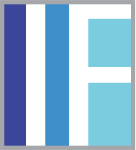Giving the Form a Future and the Future a Form. The case of the Hochhausscheiben A-E in Halle-Neustadt
02–03.09.2021
International Workshop: The un/making of forms Formographic inquiries into practice, accountability, and infra-critique
TU Dresden
Dresden, Germany
By 2021, four of the five high-rises Hochhausscheiben A-E in the center of Halle-Neustadt will have been empty for over 20 years.
Since their abandonment in the late 1990s, a number of relations and practices have prevented them from being demolished or re-used and have made them endure.
This paper analyzes the work that made the buildings endure as work “giving particular forms a future (and thus the future a form)”(Ringel, 2014, p. 67).
It draws on the notion of assemblage that allows to consider both constant change and persistence (Ong and Collier, 2005) and looks at how assemblages are being made or unmade at a particular site of practice (Far as, 2009) that is the city administration of Halle (Saale).
It argues that the municipal urban planners – through working on the persistence of assemblages and performing possible futures in practice (giving the future a form) contributed to transformative effects in the present that gave the form a future (Ringel, 2014, p. 67). This form of the future being “concretely and materially crafted, enabled, and actively reclaimed” (ibid., p. 68) in planning practices is, so the argument of the paper, ‘the future multiple’ (Mol, 1999). The future multiple stands in contrast to an ‘unknowable’ future, which is assumed by many authors today (Anderson, 2010, p. 793) claiming that we are living in a momentary world where everything seems to be temporary and where “the future is a blank separate from the present” (ibid.).
